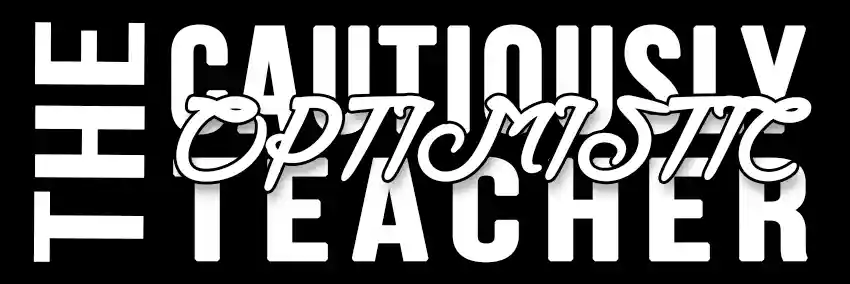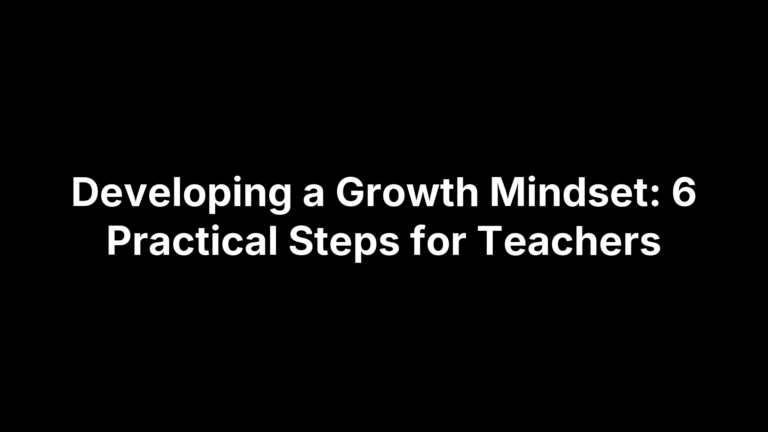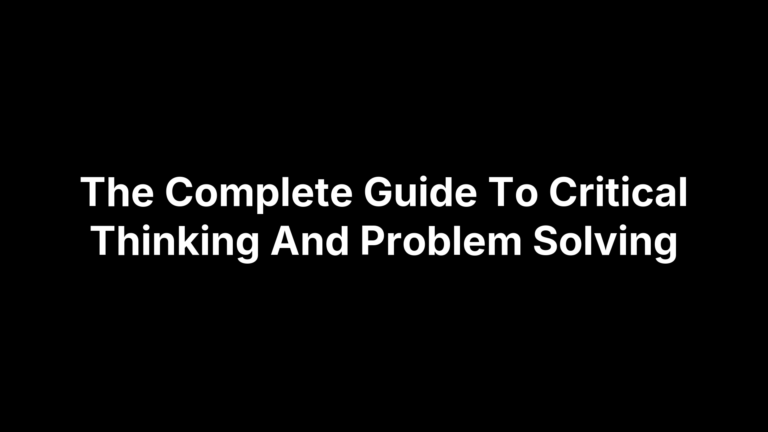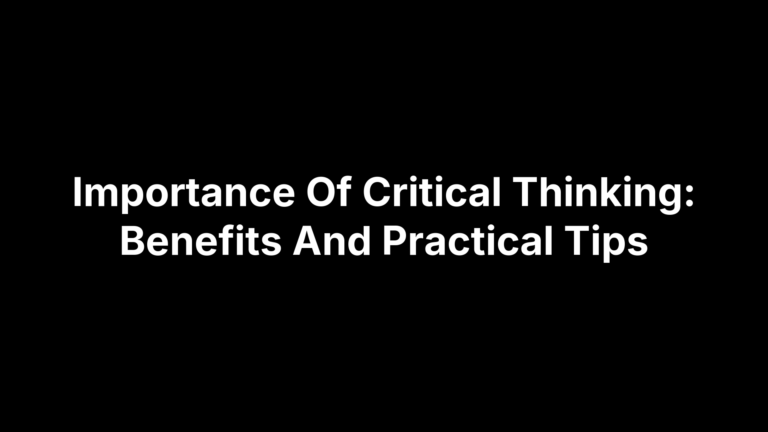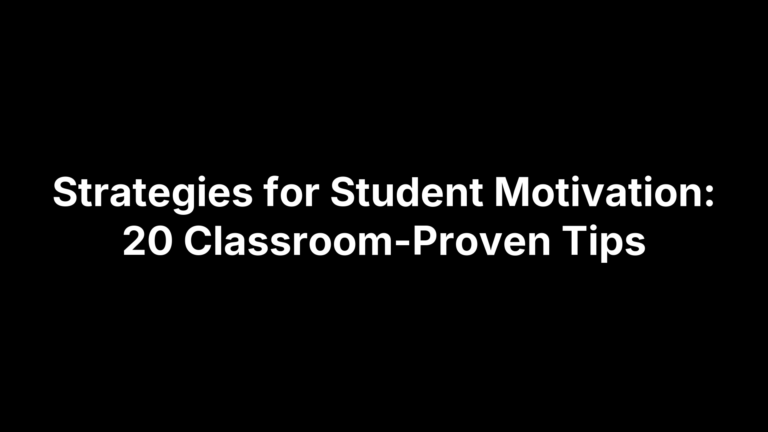Teacher Career Change: Pivot Classroom Skills to New Roles
If your Sunday-night stomach knot has started appearing on Saturday afternoon, you’re not alone. Thousands of educators quietly trade the gradebook for new careers every year, and most discover that their classroom muscles—explaining complex ideas, calming chaos, measuring progress—are exactly what hiring managers crave. And it often happens faster than you might think.
This guide breaks the process into clear, doable steps: honest self-assessment, career research, résumé translation, targeted upskilling, networking, applications, interviews, and a sanity-saving transition plan. Along the way you’ll find concrete job ideas with salary snapshots, keyword-ready résumé examples, negotiation scripts, and mindset tools to keep doubt from hijacking your momentum.
You love helping people learn; the classroom just isn’t the right fit anymore. Use the roadmap ahead to pivot your teaching expertise into a role that pays fairly, respects your evenings, and still lets you change lives—this time, including your own.
Step 1: Conduct a Clear-Eyed Self-Assessment
Before you send a single résumé, pause. A teacher career change built on guesswork often ends with another Sunday knot—just in a different office. A rigorous self-assessment surfaces what energizes you, what drains you, and which skills translate to tangible business results. Treat this step as your personal needs analysis; the clarity you gain will steer every decision that follows.
Identify Your “Why” for Leaving
First, name the forces pushing you out and the magnets pulling you forward. Writing them down—whether in a journal or a free career-clarity questionnaire—turns vague frustration into concrete criteria.
- Push factors: chronic burnout, stagnant pay scale, district politics, lack of advancement, relocation, health concerns
- Pull factors: schedule flexibility, higher earning potential, remote work, fresh intellectual challenges, mission alignment outside K-12
Tip: Circle the three that matter most right now; they become your non-negotiables.
Uncover Transferable Strengths
You already wield a powerhouse skill set—the trick is translating it into employer language.
- Public speaking & facilitation
- Curriculum/lesson design
- Conflict resolution & classroom management
- Data tracking and progress monitoring
- Differentiation for diverse learners
- Empathy and relationship building
Match each talent to a business outcome:
Curriculum design → Built onboarding modules that cut ramp-up time 40%
Data tracking → Created dashboards that flagged at-risk customers, boosting retention 15%
Spend 20 minutes listing three classroom wins per skill; you’ll mine these stories for your résumé and interviews.
Recognize Non-negotiables and Constraints
Reality check time. Even the best opportunity fails if it ignores the boundaries of your life.
- Time: Can you handle evening classes or travel?
- Family commitments: Child-care schedules, elder care, partner’s job location
- Geography: Will you relocate or require 100% remote?
- Salary floor: Absolute minimum to cover living costs and loans
- Financial programs: How will leaving affect pension years or PSLF eligibility?
Create a simple worksheet:
| Must Have | Nice to Have | Deal Breaker |
|---|---|---|
| $65k+ salary | Tuition reimbursement | Night/weekend shift |
| Remote 3+ days | Stock options | 50%+ travel |
Refer to this table whenever a job posting tempts you. If an offer violates a deal breaker, move on—no matter how shiny the title looks.
By completing these three mini-exercises, you build an internal compass that keeps every subsequent step—research, upskilling, networking—aligned with the life you actually want, not the life a recruiter thinks you’ll settle for.
Step 2: Research Career Paths That Value Former Teachers
With your priorities mapped, it’s time to see where those classroom-honed skills pay dividends. Former educators are landing roles across corporate, tech, government, nonprofit, and fully remote circles—and compensation often outpaces the top of most teacher salary schedules. Use the sections below as a menu: skim the descriptions, note the salary snapshots, and star the paths that align with your Must-Have column from Step 1.
Corporate & Business Roles
Trading textbooks for balance sheets can feel intimidating, but the day-to-day isn’t as foreign as you might think. Classrooms run on deadlines, KPIs (test scores), and stakeholder management—exactly what corporations measure.
Common titles
- Project Manager
- Corporate Trainer / Facilitator
- Customer Success Manager
- HR Development Specialist
- Learning & Development (L&D) Coordinator
2024 national median salaries: $64k – $96k (BLS / Payscale). Project management jobs are forecast to grow 6 % through 2032.
Reality check for a teacher career change to corporate:
- Expect “acronym soup” (ROI, OKR, SaaS). Spend a week on LinkedIn Learning decoding the lingo.
- Performance metrics are public and relentless—but so is the praise (and bonuses) when you hit them.
- Your lesson-planning muscle becomes a prized ability to create onboarding or sales-enablement assets that slash ramp-up time.
Tech & Instructional Design Opportunities
Ed-tech companies, SaaS firms, and universities all hunt for people who can convert complex content into engaging digital learning.
Key roles
- Instructional Designer (
$78k) - E-Learning Developer (
$83k) - UX Researcher (
$101k) - Ed-Tech Product Manager (
$115k)
Why teachers fit
- You already conduct “user research” every period—gauging engagement and iterating lessons in real time.
- Storyboarding, backward design, and formative assessment map 1:1 to agile sprints, prototypes, and A/B tests.
Growth outlook: Instructional design jobs are projected to grow 8 % this decade, boosted by the surge in remote onboarding and compliance training. Many postings emphasize “teaching background preferred”—a green flag for first-time switchers.
Government & Public Service Paths
Prefer mission over margin? Local, state, and federal agencies hire educators for policy, analysis, and workforce training.
Potential titles
- Education Program Analyst (
$88k) - Policy Advisor (
$97k) - Training & Development Specialist (
$65k) - Grant Writer (
$63k)
Perks
- Strong job security and pensions that may accept years of prior service credit.
- Clear salary bands published online—no guessing games.
- 37- to 40-hour weeks are common, easing burnout.
Tip: Search USAJOBS with series codes – 1710 (Training Instructor) or 0343 (Management Analyst) to surface openings that call out “teaching experience.”
Nonprofit & Community Impact Roles
If you still crave that “aha!” spark without standardized-test pressure, the nonprofit sector offers purpose-driven work.
Roles to explore
- Program Coordinator (
$55k) - Museum Educator (
$49k) - Outreach or Community Engagement Director (
$72k)
What transfers
- Curriculum design → museum tour scripts and volunteer trainings
- Parent conferences → donor relations and board presentations
- Data walls → outcomes reporting for grant compliance
Growth can be slower than in corporate settings, but flexible schedules and meaningful missions often outweigh the delta.
Remote-Friendly & Flexible Careers
The post-pandemic boom in distributed work has opened doors for teachers seeking location freedom.
Options
- Online Tutor or Coach (
$25–$40/hr, often part-time) - Virtual Course Creator (earnings vary—many hit
$5k+/launch) - Freelance Writer / Editor (
$0.15–$0.50/word) - Remote Customer Support Lead (
$68k)
Pros
- Set your own hours; perfect if family or travel is top priority.
- Lower overhead—ditch the commute and classroom wardrobe.
Cons
- Income can fluctuate; build an emergency fund or blend with a W-2 role at first.
- Isolation is real; schedule coworking calls or join “teacher career change Reddit” threads for community.
Use this curated landscape to shortlist 2–3 target paths. In Step 3, you’ll learn how to translate yesterday’s lesson plans into bullet points that resonate with the hiring managers in these new arenas.
Step 3: Translate Classroom Competencies Into Employer Language
Hiring managers won’t automatically see the link between behavior charts and customer churn or between a unit plan and a product-launch deck. Bridging that gap is the make-or-break move in a teacher career change. Your goal is to recode familiar tasks into the dialect of the role you want—complete with numbers that prove business impact. Do this well and recruiters will stop wondering if you can do the job and start worrying whether someone else will hire you first.
Keyword Mapping Exercise
Start by lining up each classroom duty with the buzzwords that populate job descriptions. Then attach a metric that matters in the new arena. Keep the verbs strong and the math simple.
| Teacher Task | Employer Language | Quantifiable Result |
|---|---|---|
| Wrote daily lesson plans | Developed modular training curricula | Cut new-hire ramp-up time 40% |
| Differentiated instruction for 5 ability levels | Executed segmented learning pathways | Boosted assessment scores 25 pp |
| Managed class of 32 students & IEPs | Led cross-functional team of 32 stakeholders | Delivered project 2 weeks early |
| Analyzed benchmark data | Built analytics dashboard | Flagged at-risk clients, raising retention 18% |
| Mediated peer conflicts | Facilitated conflict-resolution workshops | Reduced escalation tickets 30% |
| Presented at district PD | Delivered enterprise-wide webinars | Drove 92% attendance satisfaction |
| Coordinated field trips & budgets | Oversaw end-to-end event logistics | Came in 12% under budget |
| Integrated ed-tech apps | Implemented SaaS solutions | Increased user engagement 1.5× |
Tip: Scan three target postings, highlight repeated nouns and verbs, and plug them into the middle column above. This keyword echo boosts ATS scores without keyword stuffing.
Storytelling With STAR and CAR Frameworks
A résumé bullet grabs attention; a concise story seals the deal. Use STAR (Situation, Task, Action, Result) or CAR (Challenge, Action, Result) to morph classroom wins into business case studies.
Raw classroom anecdote
“Improved struggling readers’ scores through guided reading groups.”
STAR rewrite for a Training Specialist resume
- Situation: Onboarding timeline for new associates stretched to 8 weeks.
- Task: Reduce time to full productivity.
- Action: Designed tiered micro-learning modules modeled after guided reading groups, incorporating quizzes and peer mentoring.
- Result: Average ramp-up shrank to 5 weeks, saving the company $24K per cohort.
Drop the labeled sections; condense into one bullet:
“Designed tiered micro-learning program that cut new-hire ramp-up from 8 → 5 weeks, saving $24K per cohort.”
Soft-Skill Spotlight
Even in data-driven roles, soft skills sway hiring decisions. Prioritize those that map directly to the job ad:
- Communication & storytelling
- Empathy-based stakeholder management
- Adaptability in fast-changing environments
- Data-informed decision-making
- Leadership & coaching
Where to showcase them:
- LinkedIn headline: “Former Educator → Project Manager | Empathy-Driven Team Leader”
- About section: weave a two-sentence narrative on how you “translate complex ideas into actionable next steps.”
- Cover letter: open with a 40-word story illustrating one soft skill in action.
Master this translation layer and your background shifts from “teacher trying something new” to “learning expert who drives measurable business outcomes”—exactly the framing that lands interviews.
Step 4: Close Skill Gaps Through Targeted Upskilling
Most teachers already command 80 % of the competencies their target roles require; the other 20 % can often be filled with a weekend course or a passion project. The key is purposeful upskilling—adding only the credentials and portfolio pieces that hiring managers list most often. This approach beats another degree in both cost and speed, and it quells the imposter syndrome that whispers, “I’m not qualified.”
Low-Cost Certification Options
You don’t need a $15,000 bootcamp to speak corporate. The micro-certs below are inexpensive, self-paced, and stamped with recognizable brands, so recruiters take them seriously:
| Certificate | Ideal For | Cost | Time | Quick Win |
|---|---|---|---|---|
| Google Project Management | Aspiring project managers | $39/mo (Coursera) | 3–6 mo | Teaches Gantt charts, Agile, OKR vocabulary |
| Coursera Instructional Design by UMD | Instructional designers | $49/mo | 4 mo | Builds e-learning storyboard you can showcase |
| SHRM Essentials of HR | HR/L&D roles | $299 | 10 hrs | Adds “SHRM” keyword to résumé, covers compliance basics |
| HubSpot Academy Inbound Marketing | Customer success & writing | Free | 4 hrs | Demonstrates SaaS and CRM fluency |
Pro tip: List in the “Education & Certifications” section as “In Progress” if you’re mid-course; it still boosts Applicant Tracking System (ATS) hits.
Leverage Existing PD Credits
Those district professional-development hours aren’t wasted. Many states allow you to convert Continuing Education Units into industry-recognized CEUs. Steps:
- Download your PD transcripts from the district portal.
- Cross-check topics with certification prerequisites (e.g., “Data-Driven Instruction” often counts toward Six Sigma Yellow Belt hours).
- Request a conversion letter from the PD provider or state DOE.
Result: You walk into interviews with formal proof that your classroom training already maps to standard business frameworks—no extra tuition required.
Build a Micro-Portfolio
A certificate tells; a portfolio shows. Hiring managers love artifacts they can skim in two minutes:
- Repurpose a unit plan into a corporate onboarding module; host it in a free Rise 360 trial.
- Record a five-minute Loom explaining how you used benchmark data to pivot instruction; label it “Data-Driven Decision Demo.”
- Publish a Medium post translating Bloom’s Taxonomy into customer-education tactics; link it on LinkedIn.
Shoot for 2–3 assets that illustrate different skills—design, analytics, and communication. Add them under a “Featured Projects” section on your résumé and LinkedIn profile. When you pair these tangible proofs with targeted certifications, the “skill gap” shrinks to a non-issue, clearing the runway for Step 5’s networking strategy.
Step 5: Network Strategically and Build a Personal Brand
Job boards feel safe, but statistics show that 70–85 % of roles are filled through human connections long before they’re posted. The good news: teachers already excel at building relationships and telling compelling stories—precisely the skills that turn casual chats into job leads. In this step, you’ll learn how to plug into educator-friendly circles, run efficient informational interviews, and polish an online presence that turns silent browsers into active recruiters.
Tap Into Teacher Transition Communities
You don’t have to bushwhack the trail alone; thousands are making the same pivot right now.
- LinkedIn groups such as “Teachers in L&D” or “Ex-Teachers in Tech” let you scan success stories and job referrals daily.
- The “teacher career change” subreddit hosts candid AMA threads about salary, culture shock, and resume tweaks.
- University alumni networks often have subgroups for career switchers and will vouch for fellow grads.
Community etiquette that opens doors:
- Lurk for a week to note tone and recurring questions.
- Add value first—share a free template, summarize a webinar, or answer a newbie’s question.
- When you do ask for help, be specific: “Does anyone at Acme Corp’s L&D team have 15 minutes to chat about onboarding metrics?”
That give-then-ask rhythm positions you as a contributor, not a taker, and dramatically boosts response rates.
Informational Interview Roadmap
A 20-minute coffee chat can uncover insider intel that 10 hours of Googling never will.
Identify targets: Search LinkedIn for your desired title + “former teacher.”
Outreach script (DM or email):
Hi [Name], I noticed you transitioned from teaching to [role] at [Company]. As I explore a similar path, I’d love to learn what surprised you most about the shift. Could we schedule a 15–20 minute conversation next week? Happy to share my expertise in curriculum design or connect you with educators for any future trainings. Thanks for considering! – [Your Name]20-minute agenda:
- 2 min: Thank them, confirm time box.
- 5 min: Their story—what led to the switch.
- 5 min: Role specifics—core skills, metrics, company culture.
- 5 min: Advice—courses, portfolios, hiring timelines.
- 3 min: Referrals—“Who else should I speak with?”
Follow-up within 24 hours: a brief thank-you note plus an action you’ll take based on their advice. This simple courtesy keeps the door open for future referrals.
Optimize Digital Presence
Think of your LinkedIn profile as your 24/7 elevator pitch. A sharp headline and consistent content signal that you’ve already stepped into the new professional identity.
- Headline formula: “Former Educator → Aspiring [Target Role] | Expert in [Key Skill].” Example: “Former Educator → Project Manager | Agile Team Coach.”
- About section: 3–4 lines summarizing your “why,” top transferable skills, and a quantifiable win (“Cut curriculum development time 30 % through streamlined templates”).
- Visuals: Swap the classroom background for a banner that hints at your new field—Gantt charts, UX wireframes, or data dashboards.
- Content cadence: Post once a week—share a micro-portfolio piece, reflect on a certification lesson, or comment meaningfully on industry news. Use 2–3 targeted hashtags (#LearningAndDevelopment, #ProjectManagement) to widen reach.
- Engagement strategy: Spend 10 minutes daily liking and commenting on posts by hiring managers or thought leaders in your target space; thoughtful engagement keeps you top-of-feed without sounding salesy.
Pour 30 focused minutes a day into these networking and branding moves, and your teacher career change will accelerate from solitary job hunt to community-powered momentum.
Step 6: Craft Compelling Application Materials
With your skills translated and network humming, the next gatekeeper is paper — or more accurately, a 6-second résumé scan followed by an ATS filter. Effective documents show, at a glance, that your classroom victories equal bottom-line wins. They’re concise, quantifiable, and laser-tailored to each posting. Think of this step as lesson-plan writing for a single learner: the hiring manager.
One-Page, Results-Focused Resume
Hiring teams expect career changers to respect their time. Unless you have 15+ years of directly relevant experience, aim for one page.
Layout tips
- Header: name, city/state, phone, custom LinkedIn URL. Skip street address.
- Summary: 3 lines max. State identity shift (“Instructional designer leveraging 8 years of curriculum design to build data-driven e-learning”).
- Core Skills: 6–8 keywords pulled from the posting (
Articulate 360,Agile Scrum,KPI tracking). - Experience: reverse-chronological; 4–6 bullets per role, each starting with a strong verb (
Spearheaded,Optimized,Facilitated). - Education & Certifications: list degrees, micro-certs, and “In Progress” courses.
Bullet formula
[Action Verb] + [Skill] + [Metric] + [Business Impact]
Before/after example
BEFORE: Created lesson plans for 10th-grade English.
AFTER: Designed 6-week, standards-aligned curriculum that raised average reading scores 18% and was adopted by a 1,200-student district.
Quantification hacks when numbers feel scarce
- Use class size as a proxy for stakeholder count.
- Convert minutes saved into annual hours (
20 mins/day × 180 days = 60 hrs). - Reference percentages even if you can’t share raw data (
cut copying costs 35%).
Cover Letter That Connects the Dots
Most applicants phone this in; you’ll use it to obliterate doubt about your teacher career change.
3-paragraph structure
- Hook: a one-sentence achievement mirrors their pain point. “When XYZ Co. said it needs onboarding that sticks, I thought of the micro-learning series that trimmed new-teacher ramp-up 40% at my school.”
- Evidence: 2–3 short paragraphs (or a bullet list) illustrating transferable wins, each tagged to a requirement from the posting.
- Call to action: enthusiasm + logistics. “I’d value the chance to discuss how my data-driven facilitation can shorten your support ticket backlog. I’m available for a video interview next week.”
Tone & tactics
- Address the “Why leave teaching?” up front but briefly: frame it as running toward growth, not away from problems.
- Mirror 3–4 exact phrases from the job ad; ATS sometimes parses cover letters.
- Keep it under 300 words. Editors love brevity.
Curate Relevant Work Samples
A tight portfolio transforms abstract claims into tangible proof.
What to include
| Target Role | Sample Artifact | Hosting Idea |
|---|---|---|
| Instructional Designer | 5-slide storyboard + Rise demo | Free SCORM cloud link |
| Project Manager | Gantt chart from school play logistics | Google Drive, view-only |
| Customer Success | Parent-communication plan reframed as stakeholder roadmap | PDF with new branding |
Curation tips
- Quality over quantity: two stellar pieces beat eight average ones.
- Add a 50-word context blurb: problem, your action, outcome.
- Protect privacy: scrub student names; swap logos with placeholders when nondisclosure applies.
Delivery methods
- “Featured” section on LinkedIn (preferred — one click for recruiters).
- Portfolio link in résumé header (
yourname.com). - PDF packet attached after a positive recruiter call (ask first).
By marrying an uncluttered résumé, a punchy cover letter, and hand-picked artifacts, you give hiring teams exactly what they need to advance you to interviews—and nothing they don’t. In other words, you’re applying the same differentiation principles that made you effective in the classroom, but now the learner is your future employer.
Step 7: Ace Interviews by Positioning Yourself as a Learning Expert
You’ve translated your skills on paper; now it’s time to bring them to life in the interview. Recruiters often struggle to picture a classroom teacher thriving in a revenue-driven or tech-heavy environment. Your job is to reframe yourself as a learning specialist who already diagnoses needs, designs solutions, and measures impact—the same cycle most organizations pay big money for. Nail these conversations and your teacher career change will accelerate from possibility to paycheck.
Anticipate and Answer “Why Leave Teaching?”
Hiring managers ask this to sniff out negativity and test commitment.
- Keep it forward-focused: “After a decade of improving engagement for 150 learners a year, I’m ready to scale those skills to 1,500 employees worldwide.”
- Acknowledge, don’t complain: “I’ve loved the classroom, but I’m excited to tackle new challenges where data and adult learning intersect.”
- End with value: “My background means I can create training that sticks—saving your team retraining costs and turnover.”
Practice a 30-second version in the mirror until it feels conversational.
Align Your Examples With Core Job Competencies
Prepare three STAR stories you can flex to different questions. Then match them to the competencies listed in the posting.
| Competency Asked | Teacher Story Hook | Corporate Translation |
|---|---|---|
| Project Management | Planned school-wide literacy fair for 600 participants | “Led a cross-functional team of 14, managed a $4,000 budget, delivered event 8% under cost.” |
| Data Analysis | Monitored benchmark scores each quarter | “Built a dashboard that identified performance gaps, enabling a 22-point gain in target cohort.” |
| Stakeholder Communication | Conducted 40 parent conferences in three nights | “Facilitated high-stakes conversations that raised satisfaction scores to 96%.” |
Tip: Bring printed “story cards” (bullet outlines only) to review in the lobby. The physical prompt calms nerves and keeps your answers concise.
Navigate Salary Negotiations
Educators often underestimate their market value. Enter the discussion armed with data, not deference.
- Research: Use sites like BLS, Glassdoor, and Levels.fyi to find the 50th–75th percentile for your target title in your city.
- Project Manager: $94K median
- Instructional Designer: $78K median
- Customer Success Manager: $88K median
- Anchor high: “Based on my research and the scope of this role, I’m targeting $90–95K base, plus performance incentives.”
- Widen the lens: If budget is tight, negotiate for remote days, professional-development stipends, or a mid-year salary review.
Remember: you’ve saved districts from costly remediation and boosted student outcomes; those wins translate into real dollars for employers. Approach the conversation as a partnership to maximize mutual value, and you’ll exit with compensation that honors both your past experience and new potential.
Step 8: Plan the Transition Timeline, Finances, and Mindset
A brilliant résumé won’t matter if you run out of cash or energy halfway through the pivot. Wrapping logistics, money, and headspace into a single, realistic plan protects both your wellbeing and your new employer’s first impression of you. Treat this step as your project-launch checklist: set dates, secure resources, and prep the human behind the paperwork.
Budgeting for a Gap Period
Even the smoothest teacher career change can leave a 4–12-week gap between your final paycheck and the first direct deposit in your new field. Cushion it now so future-you can focus on learning, not panicking.
- Emergency fund formula:
(monthly bare-bones expenses) × 3. If you spend$3,200, aim for$9,600. - Health insurance: price COBRA vs. Affordable Care Act marketplace; choose the cheaper plus out-of-pocket cap that fits your risk tolerance.
- Side-gig buffer: online tutoring or selling legacy lesson materials on Teachers Pay Teachers can plug small gaps without draining bandwidth.
- One-time costs to anticipate: upskilling fees, ergonomic home-office setup, relocation mileage, professional wardrobe.
Exit Strategy for the School Year
Leaving mid-semester is possible, but departing smoothly preserves references and goodwill.
- Back-plan from your ideal start date. Subtract district notice period (often 30 days) and add one week for overlap.
- Create a handoff binder: pacing guides, passwords, IEP notes, and parent-contact logs.
- Offer to record a Loom walkthrough or a Q&A session for the incoming teacher; this shows professionalism and reduces frantic emails.
- Update your LinkedIn headline the day after you inform admin—network visibility ramps up job-lead velocity during your notice period.
Managing Identity Shift and Imposter Syndrome
You’re not “quitting teaching”; you’re evolving your impact. Still, the emotional chemistry can surprise you.
- Cognitive reframe: swap “former teacher” for “learning expert” in self-talk.
- 3-friend rule: identify two colleagues and one non-educator mentor to text when doubt spikes.
- Evidence journal: jot one win per day during the transition—finished module, positive informational interview, splashy LinkedIn comment.
- Professional therapy or coaching: use any remaining district EAP sessions before they expire.
By pairing a cash cushion, a respectful exit, and mindset maintenance, you’ll step into Day 1 of your new role clear-eyed and confident—ready to prove that classroom skills scale far beyond classroom walls.
FAQs From Teachers Considering a Career Pivot
Am I too old to change careers at 50+?
Not at all. Employers prize the judgment, patience, and leadership that come with experience, and age discrimination laws back you up. Many of our community members have made a successful teacher career change in their late 50s—often landing roles that value mentoring and strategic thinking.
Do I need a new degree?
Usually, no. Most hiring managers care more about demonstrable skills than additional diplomas. Targeted certificates (Google Project Management, SHRM Essentials), a polished micro-portfolio, and quantifiable wins from your classroom duties typically close the gap faster and cheaper than another graduate program.
Which companies actively hire former teachers?
Large corporations with robust learning teams—Amazon, Microsoft, Salesforce—regularly post openings for instructional designers and program managers. Ed-tech firms such as Khan Academy and Nearpod love pedagogical expertise, while consulting giants like Deloitte seek facilitators for client training. Government agencies and museums round out the list for mission-driven educators.
How long does the transition typically take?
Expect three to twelve months, depending on how much upskilling and networking you do. Teachers who block out weekly time for certifications, informational interviews, and tailored applications often secure interviews within 90 days and offers shortly after.
Will leaving teaching affect my pension?
Your vested years stay on the books; you don’t lose them. However, future accrual stops once you resign, and cash-out rules vary by state. Contact your retirement system to learn about rollover options, early-withdrawal penalties, and whether buying back service credit later is possible. A brief call now can save thousands down the road.
Moving Forward With Confidence
You now have a playbook: clarify your “why,” explore roles that fit, translate your wins into employer language, plug any gaps with micro-learning, network with intent, submit laser-focused applications, interview like the learning pro you are, and plan the handoff from classroom to cubicle (or couch). Each step builds on the last, so pick a start date, block weekly calendar time, and treat your transition like the most important unit you’ll ever design—because it is.
Remember, you’re not abandoning education; you’re scaling it. The same grit that guided kids through essay drafts and algebra hiccups will guide you through this pivot, too. When doubt creeps in, revisit your accomplishments list, tap your new network, and keep moving.
Need more templates or a weekly nudge? Join the newsletter and explore the free tools over at The Cautiously Optimistic Teacher. Your next chapter is already waiting.
